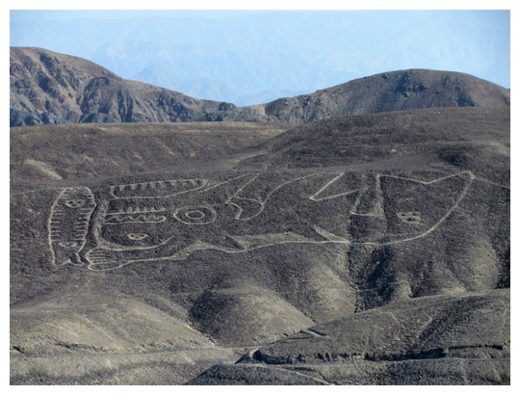
© Johny IslaThe re-discovered orca geoglyph lies on a desert hillside in the remote Palpa region of southern Peru.
The 230-foot-long (70 meters) figure of
an orca - considered a powerful, semimythical creature in ancient Peruvian lore - may be more than 2,000 years old, according to the researchers.
They said it may be one the oldest geoglyphs in the Palpa region, and older than those in the nearby Nazca region, which is famous for its vast collection of
ancient ground markings -
the Nazca Lines - that include animal figures, straight lines and geometrical shapes. [
See Photos of the Orca Geoglyph of Peruvian Lore]
Archaeologist Johny Isla, the head of Peru's Ministry of Culture in Ica province, which includes the Palpa and Nazca valleys, explained that he saw a single photograph of the orca pattern for the first time about four years ago. He'd seen it while researching studies of geoglyphs at the German Archaeological Institute in Bonn.
The photograph appeared in an archaeological catalog of
geoglyphs printed in the 1970s, which was based on research carried out in Palpa and Nazca by German archaeologists in the 1960s, Isla said.
But the location and size of the orca geoglyph were not well-described in the catalog, Isla told Live Science in an email.
As a result, he said, the glyph's whereabouts in the desert hills of the Palpa Valley, about 250 miles (400 kilometers) south of Lima, were by then unknown to local people or to scientists.
After returning to Peru, Isla looked for the orca geoglyph on Google Earth and then on foot. "It was not easy to find it, because the [location and description] data were not correct, and I almost lost hope," he said. "However, I expanded the search area and finally found it a few months later," in January 2015.




Comment: Also See: